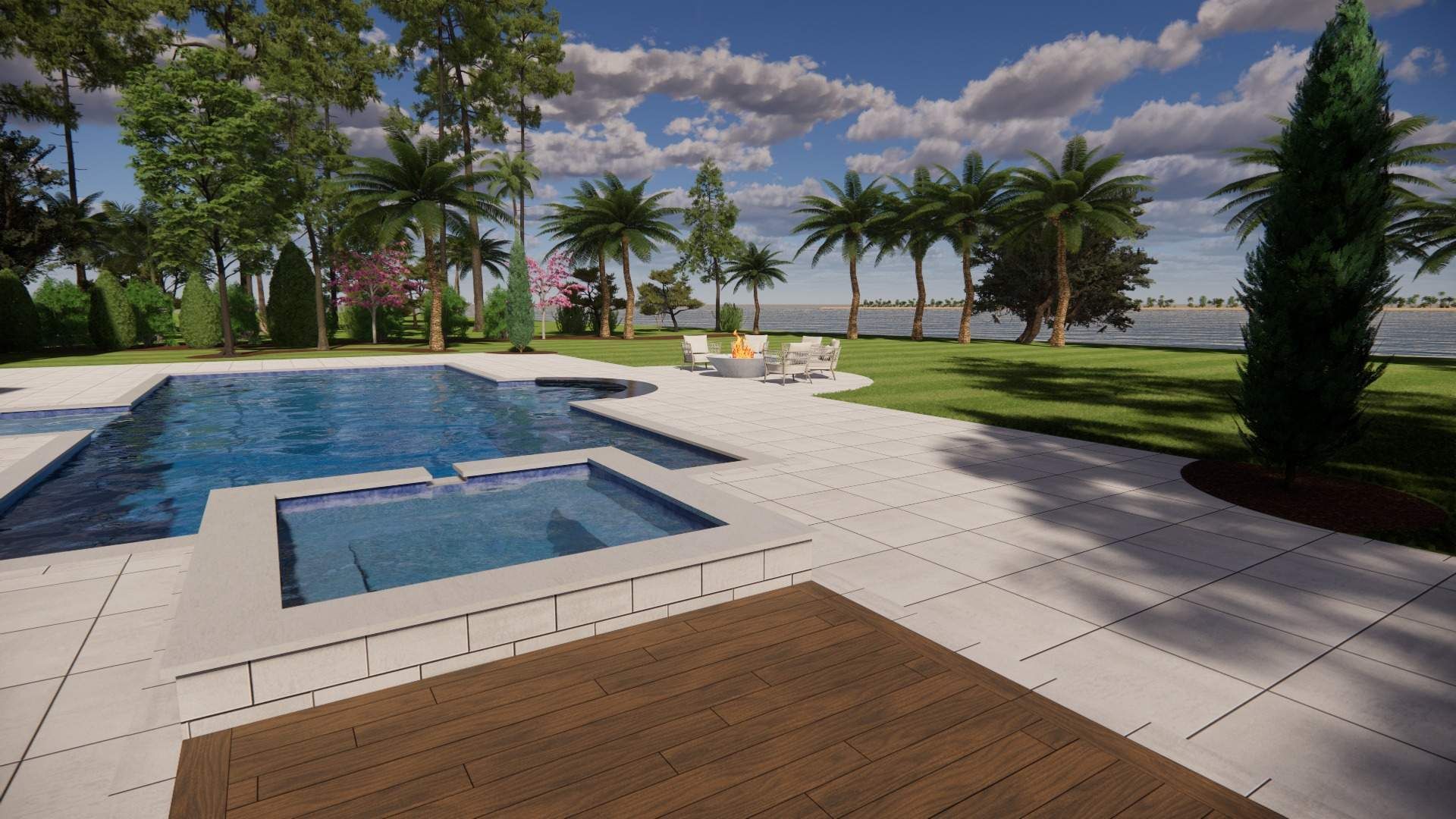Pathway Design: Transforming Spaces with Stunning Natural Stone and Pavers
This is a subtitle for your new post

Pathway Design: Transforming Spaces with Stunning Natural Stone and Pavers
Key Takeaways:
- Natural stone and pavers can enhance your outdoor space.
- They offer durability and beauty. Both materials can be combined for unique designs.
- Choosing the right type depends on your style and needs.
- Professional help can make a big difference in the installation process.
- Consider adding landscaping features to complement your pathway design.
Your outdoor space can be both beautiful and functional. Using natural stone and pavers in your pathway design is a great way to achieve this. Combining these materials adds charm and character to your yard while providing a sturdy surface for walking.
Understanding Natural Stone and Pavers
Material Type Description Pros Cons Natural Stone Earth-derived materials like granite, slate, or limestone Unique aesthetic, durability, eco-friendly Higher cost, heavier to install Pavers Concrete or brick tiles available in various shapes Versatile design options, easy installation May not have the same natural look Natural stone comes from the earth. It includes materials like granite, slate, and limestone. Each type has its colors and textures. This variety allows you to create unique paths that match your home.
Pavers, on the other hand, are made from concrete or brick. They come in various shapes and sizes. This gives you more options for designing your pathway. You can mix and match stones and pavers for a stunning look.
Why Choose Natural Stone?
- Durability: Natural stone lasts a long time. It can withstand heavy foot traffic and weather conditions.
- Aesthetic Appeal: Each stone has a unique appearance. This adds a natural beauty to your outdoor space.
- Eco-Friendly: Using natural materials is good for the environment. They do not harm the planet.
Why Choose Pavers?
- Versatility: Pavers come in many styles. You can create different patterns and designs.
- Easy Installation: They are often easier to lay than natural stone. This can save time and effort.
- Cost-Effective: Pavers can be more affordable than natural stone. This is a big plus if you are on a budget.
Combining Natural Stone and Pavers
Mixing natural stone with pavers can create a unique look. You can use stones as a border around paver paths. This adds texture and helps define the space. You might also consider using different colors of pavers to highlight the beauty of the stone.
Design Tips
- Choose a Focal Point: Decide what you want to highlight in your yard. This could be a garden, pool, or patio. Your pathway should lead to this spot.
- Use Patterns: Mixing different kinds of pavers can create interesting patterns. This adds depth to your path.
- Consider Texture: Combining smooth pavers with rough stone creates a nice contrast. This makes your pathway more visually appealing.
Benefits of Landscape Design Integration
- Enhances visual appeal by creating a cohesive outdoor look
- Encourages biodiversity by integrating native plants
- Improves functionality by creating defined walking spaces
Planning Your Pathway
Before you start, take some time to plan. Think about where you want the pathway to go. Measure the area to see how much stone and pavers you will need.
Creating a Layout
You can use a hose or string to outline your path on the ground. This gives you a visual idea of how it will look. Make adjustments as needed until you are happy with the layout.
Choosing Materials
When selecting materials, consider:
- Color: Choose colors that match your home and landscaping.
- Size: Decide on the size of the stones and pavers. Larger stones can create a bold look, while smaller pavers give a more delicate feel.
- Style: Consider the style of your home. A modern home may look better with sleek pavers, while a rustic home may benefit from natural stone.
Installation Steps
Installing a pathway can be straightforward if you follow these steps.
Step 1: Prepare the Ground
Start by clearing the area where your path will go. Remove grass, rocks, and debris. Make sure the ground is level. This will help your stones and pavers sit flat.
Step 2: Create a Base
For pavers, it's best to create a sturdy base. You can use crushed stone or gravel. Spread a layer about 4-6 inches thick and compact it down. This will help with drainage and support.
Step 3: Lay the Stones and Pavers
Begin placing your stones and pavers according to your design. Start from one end and work your way to the other. Make sure to leave small gaps between them for drainage.
Step 4: Fill the Gaps
After laying the stones and pavers, fill the gaps with sand or soil. This will help hold them in place. Use a broom to sweep the material into the spaces.
Step 5: Compact the Pathway
Once everything is laid out, walk over the path to compact it. This ensures that everything is stable and secure.
Step 6: Finishing Touches
Add landscaping around your path to soften the edges. You can use plants, flowers, or mulch to create a beautiful frame for your new pathway.
Maintenance Tips
After your pathway is installed, it's important to keep it looking good. Here are some maintenance tips:
- Regular Cleaning: Sweep away debris and dirt. This keeps your path clean and prevents slips.
- Check for Weeds: Weeds can grow in the gaps. Pull them out as soon as you see them.
- Inspect for Damage: Look for any loose stones or pavers. Replace or fix them to keep your path safe.
Benefits of a Well-Designed Pathway
A well-designed pathway offers many benefits.
Enhances Curb Appeal
A beautiful pathway adds to the overall look of your home. It invites guests and makes your outdoor space more welcoming.
Increases Property Value
Good landscaping can increase the value of your home. A well-laid pathway shows that you care for your property.
Provides Safety
Paths help guide people through your yard. This can prevent accidents, especially in areas with uneven ground.
Encourages Outdoor Enjoyment
A nice pathway makes it easier to enjoy your outdoor space. You can take strolls, entertain guests, or simply bask in the beauty of nature.
Local Resources in Hilton Head Island
When starting your pathway project, it's helpful to have local resources at hand. Here are some options in Hilton Head Island:
- Garden Centers: Look for local garden centers for stones and pavers. They often have knowledgeable staff who can help.
- Landscaping Services: If you want professional help, consider hiring a landscaping company. They can guide you through the design and installation process.
- Local Regulations: Check with local authorities for any regulations related to outdoor construction. This ensures your pathway meets all requirements.
Additional Resources for Landscaping Ideas
If you're looking for inspiration on creating an inviting outdoor environment, consider exploring landscape design guides that provide tips and tricks for cohesive outdoor aesthetics.
Conclusion
Designing a pathway with natural stone and pavers can transform your outdoor space. With careful planning and creativity, you can create a unique path that enhances your home. Whether you choose simple pavers or elegant stones, the result will be stunning.
If you want to get started on your pathway design, consider reaching out to experts who can help. They can provide valuable insights and ensure your project is a success.
Whether you are looking to enhance your yard’s beauty or need a practical walking space, integrating natural stone and pavers is the way to go. Enjoy the beauty of your new pathway for years to come!


